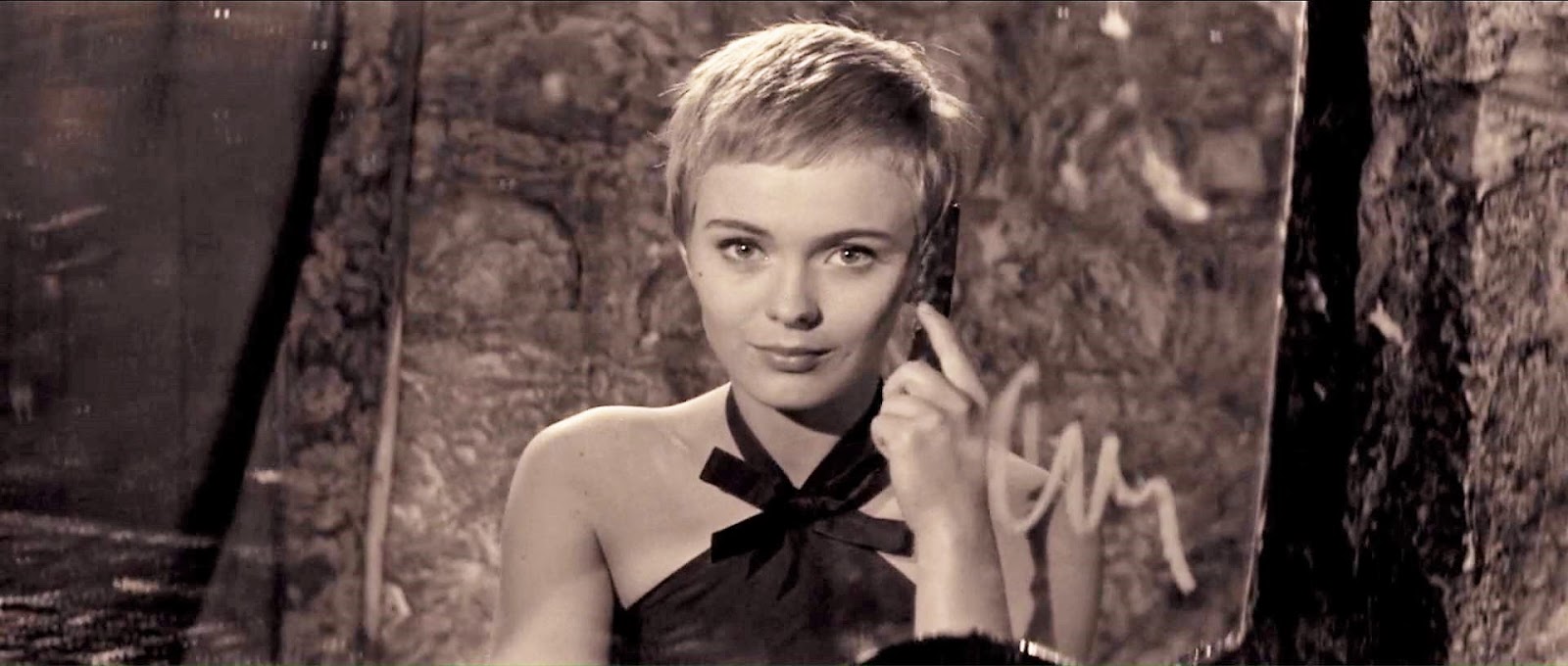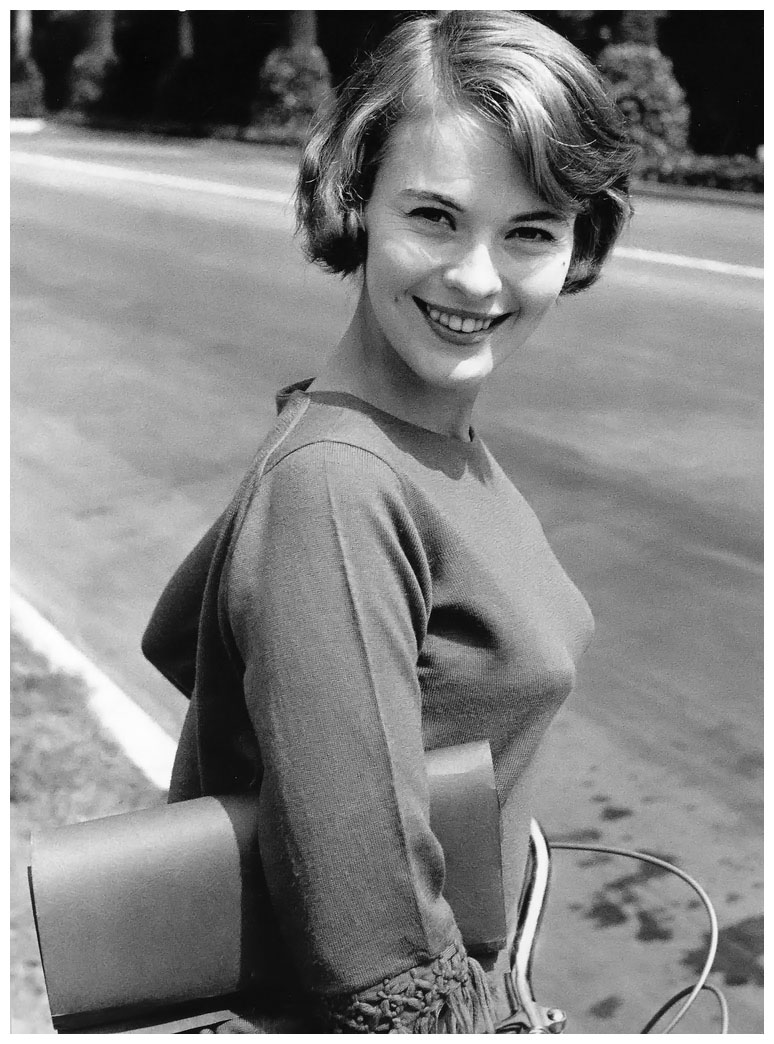Post by Brad Nelson on Jun 2, 2020 7:08:33 GMT -8
I don’t recommend this movie. But if it is watchable, it is for watching Jean Seberg and her long legs and short shorts. She’s constantly prancing through this scenes.

David Niven plays the playboy. He’s off on vacation in his villa on the French Riviera that, second to Seberg, provides some marvelous views and is perhaps the other reason to watch this.
Seberg plays Niven’s daughter. They truly do get along well, if only because they are both hedonists. Staying with Niven is his broad-of-the-moment, a perky and fun-loving blond, Elsa, played by Mylène Demongeot. Given that this is a light, somewhat vapid, drama, she plays her part with some realism and gusto.
.jpg)
So you have three pieces of eye candy (two women and the French Riviera) and David Niven. When old flame, Deborah Kerr, enters the scene (accepting an old invitation to come joint Niven, an invitation he had forgotten about), some conflict ensues between the ladies.
Kerr is a bore and her character never really works. But Timothy will be interested in hearing that, ironically, this movie was catapulted upward by its ending, which I won’t spoil. (No, you don’t get to see either Seberg of Demongeot naked.)
Geoffrey Horne plays another wooden character, a lad that Seberg runs into and she strikes up a relationship with him (or more vice-versa). But there’s little that is deep or serious in this movie (until the ending). I’m going to assume that the making of the movie itself was like a holiday on the Riviera for Otto Premiinger and crew because not a lot of thought was put into reinforcing the script. This could have been much better without a lot of tinkering. It just lacks direction.
Cecile (Niven’s daughter) is described as a “decadent young girl’ in the synopsis at IMDB. Spoiled and a bit bratty, for sure. Seberg tries to flesh out a sort of petulant child persona. And that does work to some extent. But, again, the script is spotty and lacking the depth where you care much about her character beyond simply enjoying the view.
Despite the presence of Niven, there is hardly any whit or spark in the dialogue. They shot the movie in both black-and-white and color, trying to use the switch to impress upon the viewer a mood. But that should have been accomplished with a better script, not filming gimmicks.
One reviewer writes (and I do not disagree):
Still, there are some nice views in this.


David Niven plays the playboy. He’s off on vacation in his villa on the French Riviera that, second to Seberg, provides some marvelous views and is perhaps the other reason to watch this.
Seberg plays Niven’s daughter. They truly do get along well, if only because they are both hedonists. Staying with Niven is his broad-of-the-moment, a perky and fun-loving blond, Elsa, played by Mylène Demongeot. Given that this is a light, somewhat vapid, drama, she plays her part with some realism and gusto.
.jpg)
So you have three pieces of eye candy (two women and the French Riviera) and David Niven. When old flame, Deborah Kerr, enters the scene (accepting an old invitation to come joint Niven, an invitation he had forgotten about), some conflict ensues between the ladies.
Kerr is a bore and her character never really works. But Timothy will be interested in hearing that, ironically, this movie was catapulted upward by its ending, which I won’t spoil. (No, you don’t get to see either Seberg of Demongeot naked.)
Geoffrey Horne plays another wooden character, a lad that Seberg runs into and she strikes up a relationship with him (or more vice-versa). But there’s little that is deep or serious in this movie (until the ending). I’m going to assume that the making of the movie itself was like a holiday on the Riviera for Otto Premiinger and crew because not a lot of thought was put into reinforcing the script. This could have been much better without a lot of tinkering. It just lacks direction.
Cecile (Niven’s daughter) is described as a “decadent young girl’ in the synopsis at IMDB. Spoiled and a bit bratty, for sure. Seberg tries to flesh out a sort of petulant child persona. And that does work to some extent. But, again, the script is spotty and lacking the depth where you care much about her character beyond simply enjoying the view.
Despite the presence of Niven, there is hardly any whit or spark in the dialogue. They shot the movie in both black-and-white and color, trying to use the switch to impress upon the viewer a mood. But that should have been accomplished with a better script, not filming gimmicks.
One reviewer writes (and I do not disagree):
Film makers love to show off the Rivera, and for good reason. It's one of the most spectacular venues in the world. However, it's interesting to compare Preminger's Rivera with those of Hitchcock in "To Catch a Thief" and Powell's in "The Red Shoes". In "The Red Shoes" the Riviera is merely a setting in which artists work obsessively to create their art while paying virtually no attention to it. For Hitchcock, the Riviera is a lush background for intrigue. In Preminger's "Bonjour Tristesse" the Riviera represents the lifestyle that the characters desire; luxurious, sensual, hedonistic and, ultimately, empty. "Bonjour Tristesse" is worth seeing for the Riviera, which looks fabulous, and Jean Seberg, who looks fabulous. However, the story is as shallow as the characters , , ,
In short, not only are the characters in this story not real people, they are not even sympathetic unreal people. It's bad enough having to put up with an hour and a half movie about mannequins without them having to be unlikable mannequins.
In short, not only are the characters in this story not real people, they are not even sympathetic unreal people. It's bad enough having to put up with an hour and a half movie about mannequins without them having to be unlikable mannequins.
Still, there are some nice views in this.
